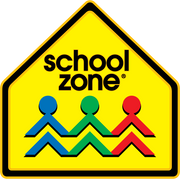Margaret McMillan, turn-of-the-century British nursery school pioneer and children's health care reformer, was way ahead of her time in saying, "Not all classrooms have four walls."
The possibilities are near-endless for building kids' academic skills while they also get the big, big benefits of being outside. ABCs? For preschoolers and those in the early grades, grab a clipboard and a sheet of paper with each letter of the alphabet written in columns. Take little ones on a scavenger hunt to find things outdoors that begin with each letter sound. This is also an excellent opportunity to learn more about the objects themselves via Internet and/or library later on. Mom or dad can help with the scavenger hunt and research, but so can an older sibling, adding to each child's skill list, knowledge base, and collaborative abilities.

For example, "leaf" starts with L, but what do leaves do for plants? How many different shapes and sizes do they come in? The word "ant" starts with the letter "a," but what kinds of ants live in your area? What types of homes do they build? In the Midwest, among others, there are sugar ants, fire ants, and carpenter ants.

Or how about "b" is for bee? According to the U.S. Forest Service, there are over 4,000 species of bees native to the U.S. Bumblebees are a "double B" word! Bees are fascinating—and super important—creatures. As they travel from flower to flower, they gather pollen and nectar to carry back to their hive for food for themselves and their families. The pollen from one flower also helps the next flower make more flowers, and most of the fruits and vegetables we eat depend on honeybee pollination. Honeybees also turn nectar into the honey we like to put on our toast and in our tea. Bees do so much!

For the scavenger hunt, add a little competition by seeing who finds something for the most letters in the alphabet, who can find the most objects starting with particular letters—say, L, M, N, O, P—or who can find the most of a category (bugs). This also develops counting and grouping skills!
Just playing outside is a very good thing
An article in The Conversation last year promoted the idea of "rewilding" kids. It says, "Resurrecting active outdoor play means getting more children outdoors more often and this calls for the rewilding of childhood." It continues, "That means family outings to explore nature; making park visits routine; encouraging children to play imaginatively outside, like building dens—any kind of creative outdoor play that fosters curiosity, exploration, co-operation, imagination and self-expression."

In 2019 Science Daily reported on a review and analysis from the University of Illinois College of Agricultural, Consumer and Environmental Sciences, of hundreds of studies, which concluded that "spending time in nature boosts children's academic achievement and healthy development." Other research suggests that frequent time spent outside in nature, or "green time," can improve kids' focus, decrease ADHD symptoms, reduce stress, and improve their sleep.
Many parks and nature centers offer summer, age-appropriate programming including ranger-led hikes and presentations, day camps, workshops combining art and nature. Tap into these resources close to home or at your family's vacation destinations. For example, Fenner Nature Center in Lansing, MI, offers day camps with fun names such as Bugs & Slugs, Scales & Tails, and Gross Nature.
Bring the outdoors inside on rainy days
Not every day will be ideal for going outside, but any day is a good day for learning about nature. For some hands-on activities, check out School Zone's DIY Learning page. Try the Animal Campaign, which involves making a poster for a misunderstood animal or plant a lima bean and see what happens.
Another idea for inclement weather or travel time is the big 320-page Fun & Games Kindergarten Workbook. Little ones learn super fun facts and stretch their imagination as they explore creative, colorful activities such as Prehistoric Egg Hunt, Crustacean Elation, River Life Cutouts and Orangutan Hang Time. They can even learn to draw ducks and dragonflies and put them on a pond! Tear-out pages make great individual worksheets.
For kids ages 8 and up, the 96-page Super Deluxe Word Searches, an Activity Zone® workbook, also with perforated pages, takes them on a journey all over the world. It delivers lessons in science, history, and the arts, as they meet explorers, pioneers, and authors and encounter ecosystems that include mountains, rivers, oceans, and seas.
This summer, make connecting kids with nature and getting them outside a joyful priority.












